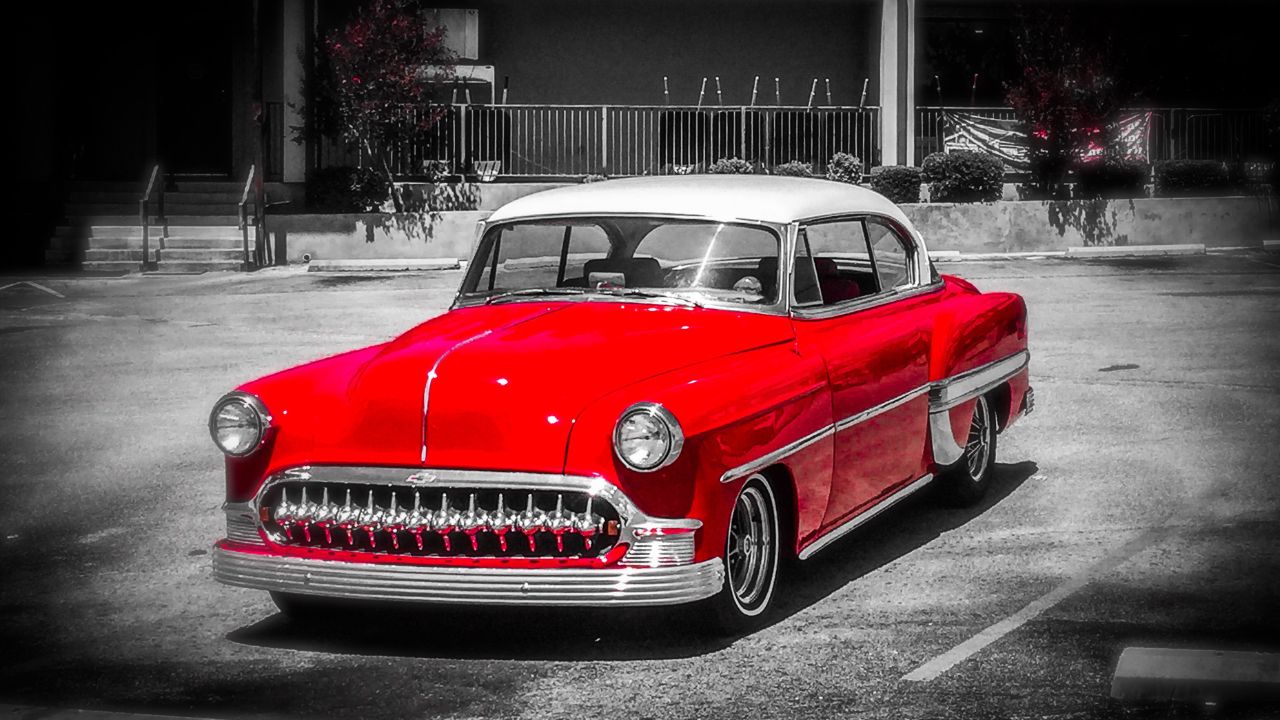
1969 Dodge 440 joined Super Bee's lineup in Six Pack trim with 390 HP. 1970 saw the introduction of a bumblebee grille on the grille. This reminded one of spinster spectacle frames. Super Bee sales fell about half by 1970, but Chargers remained very popular with muscle car enthusiasts. The Super Bee was no longer the top-seller. There were still many great years ahead.
2008 Dodge Charger SRT8
Aside from being very fast, the Dodge Charger SRT8 super bee has one other notable feature: a low-grade interior. Although the seats are supportive and wide, they don't look retro. It also has a steering wheel that looks like a decapitated turtle. Although this is not the car for luxury-oriented people, it's still fun to drive.
Limited-edition trim available in three paint colours, the 2007 Dodge Charger SRT8 Super Bee. It featured the "Super Bee", decals on the grille and hood. The interior was updated using blue accent stitching. This model was limited in production to just 425 units and is highly collectible. If you're looking to own a rare car, consider the 2008 Dodge Charger SRT8 superbee.

1968 to 1970 Dodge Super Bee
The 1968-1970 Dodge Super Bee muscle car could be the one for you. This muscle car, based on the Coronet coupe was comparable in price and performance to the Plymouth Road Runner. The 1968 Super Bee weighed 65 more than the Road Runner and had a wider wheelbase and wider rear wheels. The car had a distinctive "Bee" badge, a fancier grille and a bumblebee tail trime.
The 1969 and 70 Super Bees received major modifications, including looping chrome bumpers as well as dual hood scoops. It also featured new taillamps and a "power bulge" hood. These cars could be purchased as hardtops or coupes. The Hemi engine was the most powerful. Whether you want a three-speed manual or four-speed automatic, the 1968 to 1970 Dodge Super Bee was sure to meet your needs.
1969 to 1970 Dodge Super Bee
The entry-level muscle car, the 1969-1970 Dodge Super Bee, was introduced in the late 1960s. It replaced the Plymouth Road Runner, a low-priced muscular car. In its original production, there were three versions of the Super Bee's engine. All were V8s. The 1969 Super Bee received a new grille as well as a headlight design. Other than that, it was exactly the same model as the 1968 model. A new engine was added half way through the year. The new engine, a 440 cu-in Six Pack, produced 390 horsepower and was less expensive than the 426 cubic inch Hemi.
The A12 package adds features such an aluminum intake manifold or heavy-duty cooling radiator, and a scooped Hood. It also included upgraded handling and suspension. It was powered by a 440 cubic inch V8 engine with three Holley two barrel carburetors, a 10 to 1 compression ratio, and had a 440 cubic inch bore. The engine produced 390 horsepower as well as 490 pound feet of torque. A three-speed automatic transmission was used to couple the engine with the transmission. This made it a popular choice.

1968 to 1970 Dodge Coronet
The Coronet, which was originally introduced by Dodge in 1949, quickly evolved into a muscle car. A new look was added to the 1968 Coronet with a modified styling package and a rounder body. The Coronet was offered in many body styles, as well as engine options, from mildly to wild. Many Coronet R/T buyers chose the Coronet R/T, which was undoubtedly the most popular Coronet model.
The 1969 Super Bee was a very similar car to the previous model, but with some small modifications such as a new grille. A new engine was added to the car mid-year. It now had a Hemi 390 HP engine, but it was significantly cheaper than its predecessors. This engine enabled the Super Bee to compete against more expensive models such as the four-door Plymouth with a Hemi engine.
FAQ
What are the requirements of an auto technician?
You must have completed high school or GED with good grades in maths and English. Additionally, you will need to be proficient in reading and writing. You will need to pass a written test and then go through a series of practical exams before being allowed to start work.
Do I need to have a degree to work as an automotive mechanic? Can I study part-time?
Although a degree is not necessary, it can be helpful. Employers are more likely to hire candidates who have completed a complete degree. It shows you are dedicated and have worked hard to achieve your goals.
However, it doesn't mean you can't still work while studying. Some universities let students complete their coursework in the summer and then continue their studies during the school year. Students can also take classes part time throughout the academic year.
What do I need to know about car mechanics?
Auto mechanics don't require any knowledge. All you need to know is how to fix things. Most people start by fixing things like changing tires or fitting brake pads.
You need to be able read and comprehend diagrams, follow written instructions and adhere to basic principles of good practice. Also, you will need to know how to tell if parts require replacing or repair.
You should not attempt to fix vehicles without proper training and guidance. This is especially important if you work with expensive parts such as transmissions or engines.
In fact, even though you won't need to know much about cars, you will need to thoroughly know the basics of mechanical engineering and physics. This is how you understand the mechanisms behind engines and brakes.
You should also be ready to handle all kinds of situations. For example, you may find yourself working on a vehicle that has been involved in a serious accident. Additionally, you will need to have experience with handling accidents and breakdowns.
You must also be willing to learn quickly. As well as being able to diagnose problems, you'll need to be able to perform simple maintenance tasks such as tightening nuts and bolts.
Does it really matter what college I choose?
No, not really. In terms of getting into the auto industry, there is no distinction between colleges. You will find that some schools offer better programs than others. If you are looking for something more specific, consider going to another school.
How long does an apprenticeship in automotive mechanics last?
A three-year apprenticeship in automotive mechanics takes. This includes two years at school and two years working as an apprentice. The first year is spent learning all aspects of the trade, including theory, practical skills, and safety procedures. During this time, you'll also learn how to use tools safely and efficiently. After the completion of the first year, you will spend another year on the job training. Here you'll gain valuable experience in different trades. These periods will also give you the chance to take formal courses.
The final year of this program is spent in obtaining qualifications and becoming certified in your field. These include NVQs. They are awarded after passing exams on specific topics within the industry. Additionally, HNCs are Higher National Certificates that cover general subjects such management, customer service, and business administration. Finally, there are City & Guilds certificates that are offered for those who wish to become qualified in certain trades.
How do I prepare to be a mechanic apprentice?
It is essential to understand what you are getting into. You need to understand the mechanics of cars and how they work. This will allow you to be prepared for your first day at work.
You should also know how to fix common problems such as tires or broken lights.
You will be able to diagnose and repair problems yourself.
You'll also need to know how different parts fit together to put them back together again.
Finally, you need to be able to safely and efficiently use tools.
These things will enable you to be a competent mechanic.
Statistics
- 52% of Mechanics in the United States think their salaries are enough for the cost of living in their area. (indeed.com)
- According to the BLS, the median annual salary for automotive service technicians and mechanics in the United States was $44,050 in May 2020. (uti.edu)
- Apprentice mechanics earn significantly less hourly than mechanics who have completed training, with a median wage of approximately $14.50 an hour, according to PayScale. (jobhero.com)
External Links
How To
How to become an automotive technician
Automotive technicians provide repair and maintenance services to vehicles. He/she works in car dealerships as well as auto shops, garages, and service centers. He/she works with customers to repair their cars and trucks, ATVs or snowmobiles. An automotive technician must have the ability to quickly diagnose and fix problems.
An associate degree should be obtained from a vocational school if you wish to work as an auto technician. After completing the program, he/she must pass ASE certification. ASE stands in for American Society of Mechanical Engineers. The ASE certification test consists two sections. One section tests mechanical knowledge; the second section tests practical skills. To take the test, you must visit one of the approved testing locations. These locations can be found online or at your local auto dealer.
After passing the exam, a candidate must take a state exam before being licensed as an automobile technician. This process is different depending on where you live. Some states require that candidates attend training courses, while others permit them to learn independently. In addition, some states license technicians immediately after they receive their license, while others wait until they have completed at least six months of employment as an automotive technician.
A person must apply to an auto dealership in order to get started as an automobile technician. New employees are usually apprentices when they first get hired. Apprenticeships typically last three years. The apprenticeship program teaches students how to change oil, adjust brakes, replace tires, clean spark plugs, inspect engine compartments, and perform routine maintenance. Some students will learn advanced repair techniques, such as changing shocks, installing air filters, and replacing engines. Many schools offer classes during regular hours. However, some schools offer evening classes if needed.
Once a student is done with his/her apprenticeship he/she can become a master journeyman. Journeymen generally spend four- to five decades learning how to fix major systems like transmissions. They are also taught how to troubleshoot electrical components and remanufacture engines. Because they have a good understanding of the job and what customers expect, many employers prefer to hire journeymen.
Once a candidate passes the required exams and is granted a license, they might consider opening their own shop. According to the Bureau of Labor Statistics in 2010, nearly 1.7 Million automotive mechanic jobs were available. This number was expected increase 18% between 2009 - 2020. The candidate should expect to invest thousands of money in equipment and supplies if he/she decides to start his/her shop.
The salary for an automotive technician depends on several factors, including the type of employer, location, education level, and experience. On average, an unemployed person could earn $20,000 annually. Someone with only a high school diploma could earn around $21,000 per year. A bachelor's degree is equivalent to approximately $24,000 annually. Technicians with a bachelor’s degree made about $27,000 annually. Master's degree holders make around $32,000 annually. Salary increases are common so professionals who make less than $30,000 a year could realistically expect to earn $40,000 over the next few years.